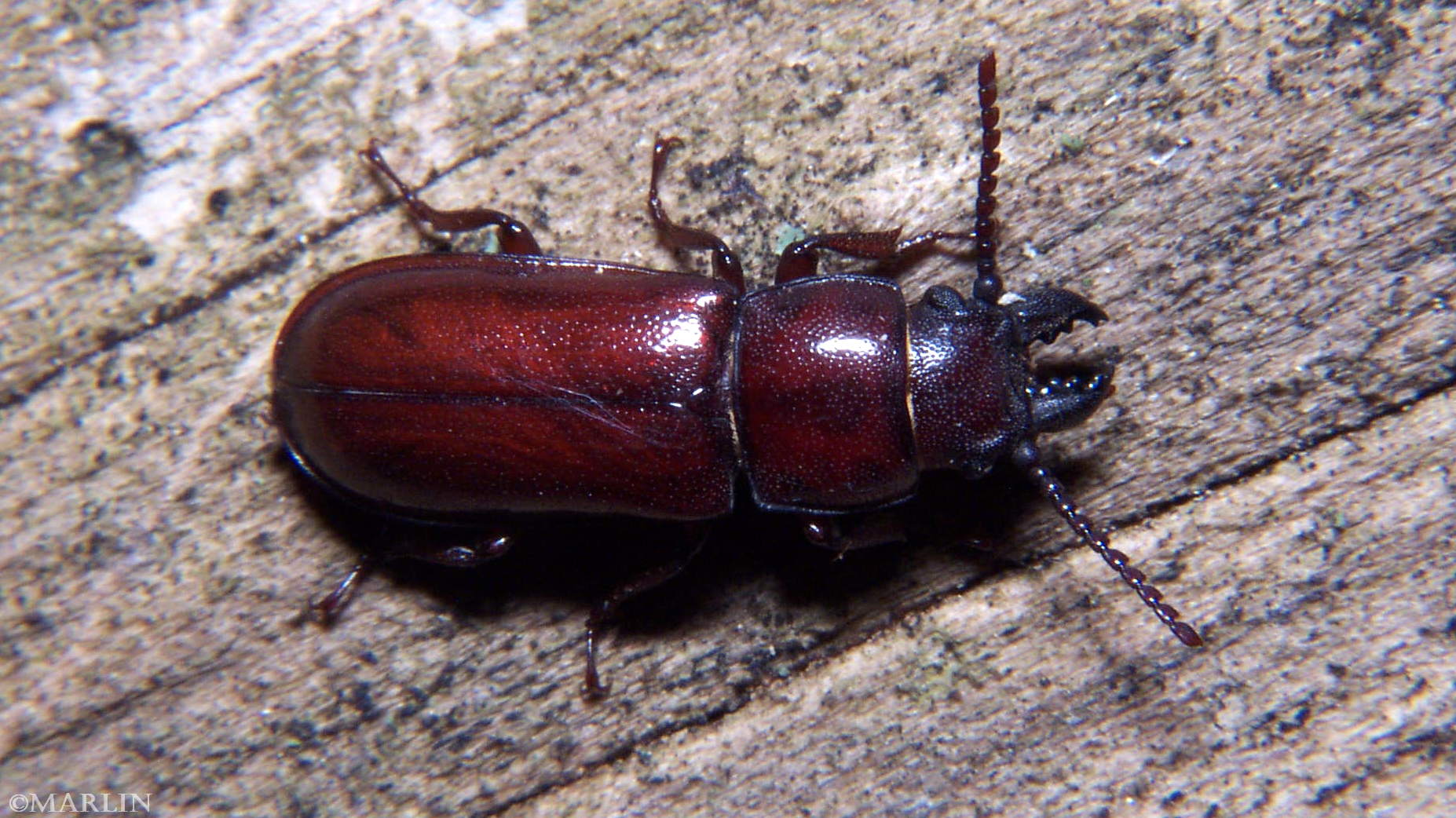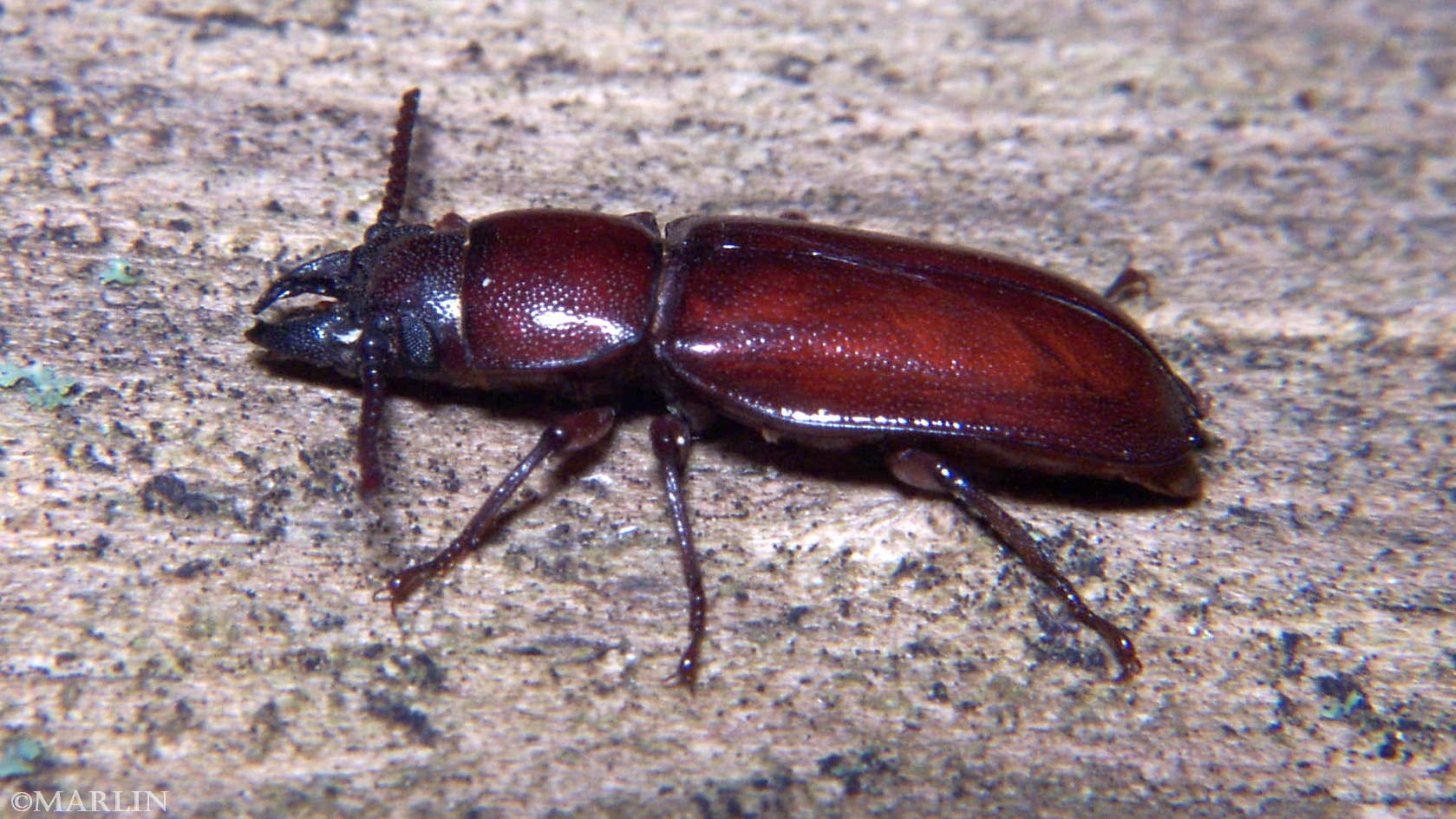Longhorn Beetle – Neandra brunnea
Family: Cerambycidae – Longhorned Beetles
Commonly called the pole borer beetle, it’s a longhorn masquerading as a stag beetle.
Most adult cerambycids, particularly the brightly colored ones feed on flowers and pollen, and as such can be important pollinators of some flowering plants. Other species consume sap, leaves, blossoms, fruit, bark or fungi. [3]
True to their common name, the larvae of the pole borer bore in trees and structural lumber in contact with wet ground. This is a robust beetle that can reach 20mm (this specimen = 15mm.) Highly resembles a stag beetle, but antennae are not clubbed.
Cerambycidae is a cosmopolitan family of beetles characterized by their extremely long antennae, which are sometimes up to 2.5 x longer than the beetle’s body. Many longhorns are serious agricultural pests, as their larvae have the unfortunate habit of boring wood. The Asian Longhorn beetle, for instance has been responsible for the preventive destruction of thousands of trees in Northern Illinois and other locations in the United States.
References
- Douglas Yanega, Field Guide to Northeastern Longhorned Beetles (Illinois Natural History Survey, 1996).
- Josef Nissley Knull, The long-horned beetles of Ohio: (Coleoptera: Cerambycidae)
- Bugguide.net, Neandra brunnea
Beetles Main | Beetles Index | Longhorns | Leaf Beetles | Soldier | Blister | Lady | Scarab
Tree Encyclopedia / North American Insects & Spiders is dedicated to providing family-friendly educational
resources for our friends around the world through large images and macro photographs of flora and fauna.



